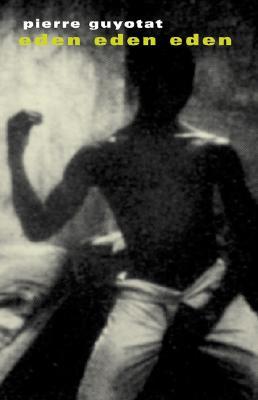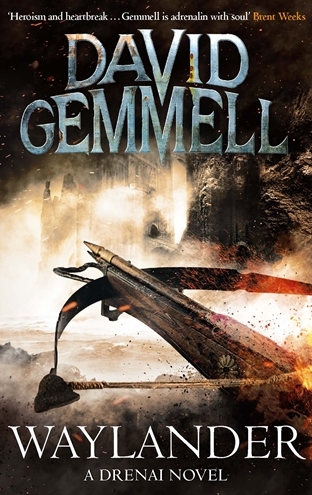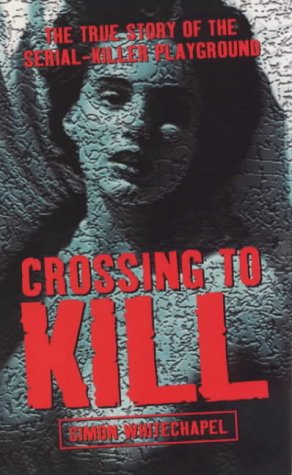 Some decadent writers wage war against ideas or institutions. Pierre Guyotat waged war against the French language, and now Creation Books has opened a new front so that he can wage war against the English language too.
Some decadent writers wage war against ideas or institutions. Pierre Guyotat waged war against the French language, and now Creation Books has opened a new front so that he can wage war against the English language too.
This alleged “book” contains a single sentence that runs for 181 pages, telling a disturbing and pornographic story of depravity in war-torn Algeria. Rules about prose, readability, and taste are discarded, and what’s left is a book that does nothing but blast you with sensation. I get the idea that Guyotat didn’t care about about what the book makes you feel. He just wanted you to feel SOMETHING.
The author was drafted in the Algerian war when he was twenty, tried to induce desertion among the ranks, and was imprisoned for several months in a hole in the ground. This adds an exciting edge to Eden x 3, similar to the Marquis de Sade and Jesus Ignacio Aldapuerta. Is it really a work of fiction? Are some of the things in it drawn from life?
Hopefully not. If so, I doubt many would feel comfortable shaking Guyotat’s hand at a book signing. …Peuhl unsheathing dagger at hips, tracing with point of blade – bent: youths gutted against onyx wall – semi-circle around vulva, plunging blade into mute flesh, tearing, stripping, slicing muscles, nerves running from vulva into flaccid sheath covering strangulated member… An audiobook version would likely consist of a voice actor vomiting at a microphone for 40 minutes.
Throughout this book, I was struck by Guyotat’s interest in getting young boys into physically compromising positions. He’s not alone in that view, by the way. According to most of the transgressive writers I’ve read (Dennis Cooper, William S Burroughs, Jean Genet, etc), boy-rape is pretty much the tops. Girls will do if you’re hard up, but it’s just not the same.
The rainbow is unweaved somewhat by Guyotat’s limited vocabulary – the word “jissom” appears dozens of times, it seems. Maybe Creation’s translation can be blamed for that, though. Some of the prose seems…idiosyncratic (“grease exuded from grass bung, hardening, vortex veering back to Venus”), and I wonder if the credited “Graham Fox” is another name for “James Havoc”. Someone should ask him. Assuming he’s not dead this weekend, natch.
Eden x 3 is probably most valuable as a “novelty read”. It’s a challenging book and I don’t know if anyone has ever read it right the way through. It’s kinda like what Sade or Bataille would read like if you took away their philosophy books, lesioned their prefrontal cortex, and sent them off to Algeria with a set of Benwa balls instead of a gun.
 I started out this series on the third book, and thought it was probably the best Gemmell book I’d read to date – furious, action-packed, with a cool main character and a sucker punch of an ending.
I started out this series on the third book, and thought it was probably the best Gemmell book I’d read to date – furious, action-packed, with a cool main character and a sucker punch of an ending.
Now I’ve read the first book. I’m disappointed. The tree fell far from the apple.
This is a short and overstuffed fantasy story, with an incoherent plot that tries to do too much in too few pages. The story never gets a chance to breathe. It’s just 300 pages of “here, have another plot complication”, with no pauses to think about what you’ve learned. Every chapter we meet a new character, receive a new story development, and get a new fight scene, and soon the book resembles an incoherent montage that streams past you with someone’s finger on the fast forward button. This book’s pages are so overworked that they are in danger of forming a union and demanding overtime and a dental plan.
It’s about Dakeyras (though I don’t recall if he’s named in this book), the “Waylander”, a famed assassin armed with a double-loaded crossbow. The land of Drenan is being invaded by neighbouring Vagria (a war he’s somewhat responsible for, having killed their king), and he wanders the land, profiting from the slaughter. He goes against character by rescuing a monk from Vagrian torturers (I don’t understand why the Vagrians are killing every priest they find, since the war is politically motivated. Waylander even says that the priest would be safe if only he put aside his blue robes), and he ends up being involved in a plot to rescue the besieged garrison of Dros Purdol, where much of the remaining Drenai forces are making a last stand.
There’s far too many characters for such a short book. Gemmell’s novels benefit from a bit of RE Howard’s sense of spatial loneliness, a warrior riding across an empty plain. Waylander feels more like riding a Calcutta bus with several dozen people who all need a bath. We meet Waylander, and then we meet Cadoras, another master assassin armed with a bow, and then we meet Durmast, a third assassin who (in a flourish of dazzling creativity) Gemmell gives an axe. This is a major problem. There’s three characters in the book who serve a similar function (amoral anti-hero), with similar traits, and they all seem almost interchangeable.
Plus it steals Waylander’s thunder – hard to get impressed by a master assassin when apparently you can find a master assassin hiding under every kitchen table in this country.
Various familiar Gemmellisms come and go – evil priests, revoltingly upright and wholesome career soldiers, shape-shifting monstrosities. The plot is hard to follow, and not very logical. The final battle comes and goes, and you wonder why Waylander was even necessary. He found a suit of armor, I guess.
In the plus column we get a few great scenes (mostly in Dros Purdol). At long last we meet the hero hinted at in Legend, Karnak the one-eyed general. Waylander is fast moving, and certainly action packed. But Gemmell’s fight scenes – here as elsewhere – have a mechanical, inhuman quality. A battle-axe rives a helm and you think of videogame sprites battling each other.
I think you should repeat my mistake and read the third book first. Gemmell never takes the idea of a series too seriously. All of his books are readable on their own.
 Crossing to Kill is a true crime book about the life and (t/cr)imes of Abdul Latif Sharif, a chemist who fled the US to Mexico to avoid deportation, and then apparently became a prolific rapist and killer of Ciudad Juarez’s working class women.
Crossing to Kill is a true crime book about the life and (t/cr)imes of Abdul Latif Sharif, a chemist who fled the US to Mexico to avoid deportation, and then apparently became a prolific rapist and killer of Ciudad Juarez’s working class women.
Sharif was arrested (leaving an embarrassingly long body trail)…but the rapes and murders of young women went right on happening. The clouds were gone, but the rain continued. Was Sharif bribing local gangs to commit crimes on his behalf, to make it seem like they’d arrested the wrong man? Or is Sharif part of a Clockwork Orange-esque change in Mexico, with Hispanic macho culture morphing into something much sicker?
This book offers analysis and speculation on the causes of the Ciudad Juarez murders. Whitechapel’s prose is very efficient – and this might be Crossing to Kill‘s Achilles Heel. After about forty pages he has recapped the murder spree up to date, and suddenly there seems little left to talk about. Much of the book is filled with topics of general interest to Whitechapel – soon we’re reading asides about the body types of Roman emperors, and a Catholic writer’s mistranslation of a word in Ecclesiastes. Crossing to Kill takes you far away from Mexico, and reads almost as a continuation of his earlier book Intense Device in some parts.
Crossing to Kill is probably better read as a book on crime and psychology than a specific book about Sharif’s crimes. Answers are few, and vague. Perhaps that’s the point, that all we have are guesses. But why read a book when there’s nothing waiting at the end except “I don’t know”? The official police reports will get you to the same place much faster.
Occasionally Whitechapel makes an incredible through-the-scope sniper shot of analysis, and sometimes he draws together unrelated subjects into an unexpected but persuasive whole. Other times – as when he speculates that Sharif could have been on steroids, based on some of his buddies being into Arnold Schwarzenegger movies – you get the sense of too little butter being spread across too much bread.
But there’s creepy and evocative ideas, such as when the murders are compared with an electron microscope, where small cells must be destroyed so that they can be analysed. The comparison with the young women of Ciudad Juarez is unmissable. Young women who would otherwise have lived their lives and have been forgotten are now receiving publicity, memorials, and prayers. They are being used as rallying points for feminists and morality campaigners and social justice groups. Indeed, they have unintentionally achieved kind of immortality. All they needed to do was die horribly.
It’s readable and far from dull, but I think Simon Whitechapel was the wrong person to write this book. This subject does not lend itself to scholarly analysis and armchair detective work. Crossing to Kill should have been written by a Mexican policia with twenty years of dirt under his fingernails.
 Some decadent writers wage war against ideas or institutions. Pierre Guyotat waged war against the French language, and now Creation Books has opened a new front so that he can wage war against the English language too.
Some decadent writers wage war against ideas or institutions. Pierre Guyotat waged war against the French language, and now Creation Books has opened a new front so that he can wage war against the English language too. 

